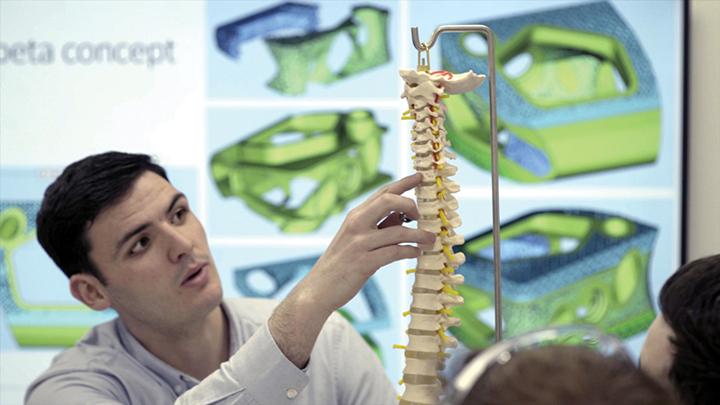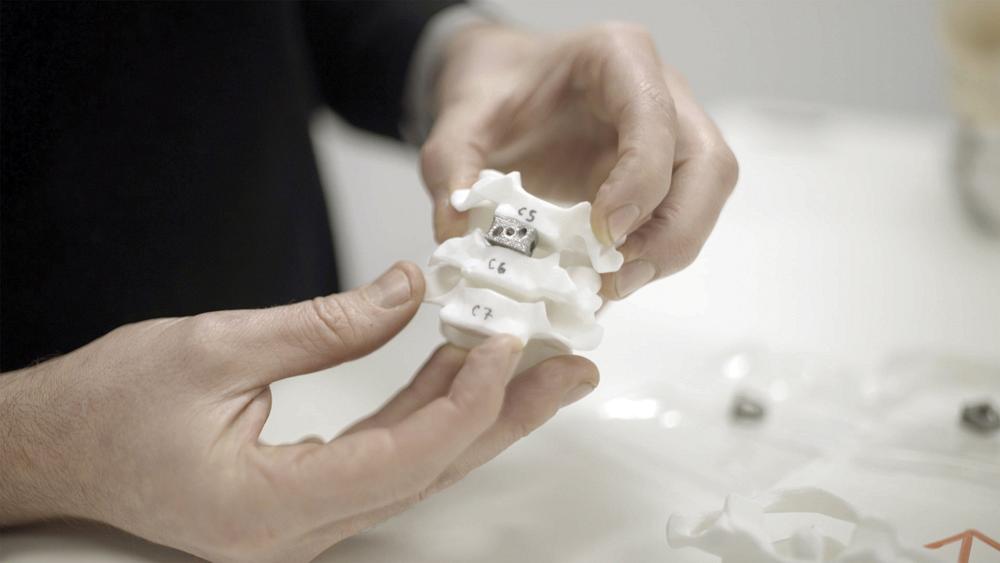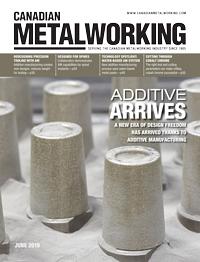- FMA
- The Fabricator
- FABTECH
- Canadian Metalworking
Designed for spines
Collaboration demonstrates AM capabilities for spinal implants
- By Canadian Metalworking
- July 8, 2019
- Article
- Metalworking

Implants created using additive manufacturing mimic the mechanical properties of bone, resulting in better patient outcomes.
Situation
Patients with medical conditions such as degenerative disc disease, herniated disc, spondylolisthesis, spinal stenosis, and osteoporosis often require spinal implants to restore intervertebral height. Traditionally made metal parts don’t connect to bone as well as implants made using additive manufacturing (AM).
“Traditional CAD tools weren’t built to design complex lattice structures; the job would be difficult or even impossible,” said Matt Rohr, application engineering manager for nTopology. “nTopology’s software was designed to complement existing work flows and make the job easier. We cut the design time of complex structures from days to minutes, which was a crucial component in helping this project run on schedule.”
Renishaw collaborated with nTopology and Irish Manufacturing Research (IMR) to demonstrate the advantages of AM in the production of spinal implants. By working together on this project, the three companies showed how the transition from design to part creation using AM can be streamlined.
Resolution
To prove out the process, IMR designed a titanium spinal implant for the cervical spine (c spine) using nTopology’s generative design software. IMR then manufactured the implants using Renishaw’s RenAM 500M metal AM system.
The implant has a lightweight lattice structure that is optimized to meet the required loading conditions and has a greater surface area than a traditional implant, which can aid osseointegration (the creation of a connection between bone and an artificial implant).
“AM can be used to manufacture spinal implants with lattice structures, which cannot be achieved with conventional manufacturing techniques,” explained Ed Littlewood, marketing manager of Renishaw’s Medical and Dental Products Division. “AM implants can be designed to mimic the mechanical properties of bone, resulting in better patient outcomes. But all of this comes to nothing if you don’t have the tools to create the design.”
The improved implant design made possible by AM means patients may require shorter surgery time and fewer follow-up surgeries, saving health-care resources and costs.
“Together, we designed a set of experiments that yield the most appropriate parameter settings for the product. As a result, we reduced the amount of post processing required on key features of the implants by a factor of 10,” said Sean McConnell, senior research engineer at IMR.
Irish Manufacturing Research, www.imr.ie
nTopology, www.ntopology.com
Renishaw Canada, www.renishaw.com
About the Author
Related Companies
subscribe now


Keep up to date with the latest news, events, and technology for all things metal from our pair of monthly magazines written specifically for Canadian manufacturers!
Start Your Free Subscription- Trending Articles
Sustainability Analyzer Tool helps users measure and reduce carbon footprint

Mitutoyo updates its end-user portal

Enhance surface finish with high-speed machining

Equispheres secures $20 million investment round

Solid carbide drills produce precision holes in short chipping materials

- Industry Events
Automate 2024
- May 6 - 9, 2024
- Chicago, IL
ANCA Open House
- May 7 - 8, 2024
- Wixom, MI
17th annual Joint Open House
- May 8 - 9, 2024
- Oakville and Mississauga, ON Canada
MME Saskatoon
- May 28, 2024
- Saskatoon, SK Canada
CME's Health & Safety Symposium for Manufacturers
- May 29, 2024
- Mississauga, ON Canada
















